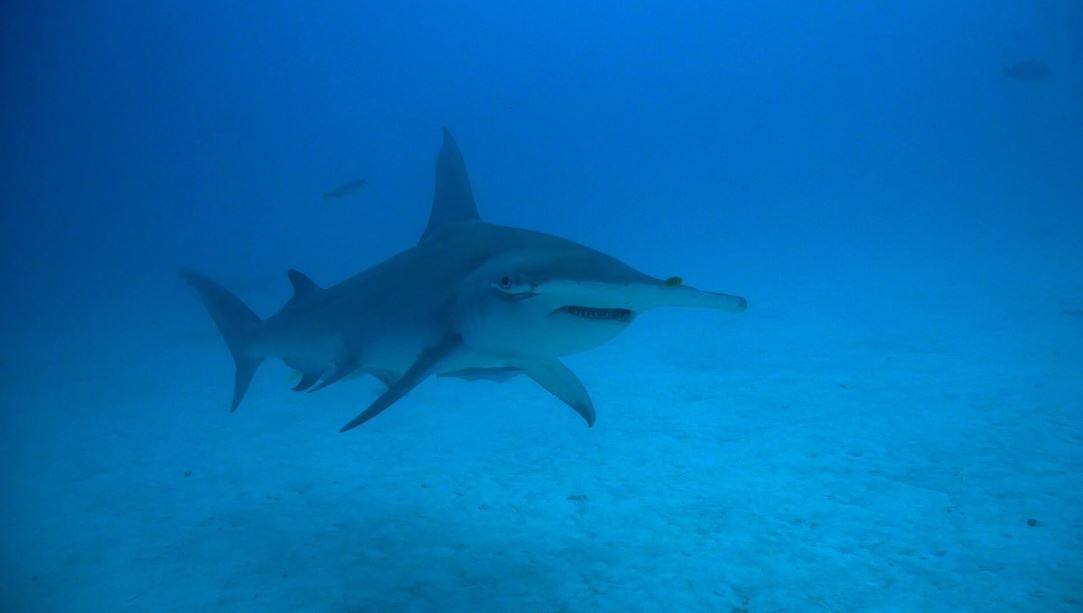Island Goers
99 > 100: A True Story

 Nikhil Chinapa – 95 dives completed. That was in January 2010.
Nikhil Chinapa – 95 dives completed. That was in January 2010.
I knew that the next time I went diving, I’d hit 100 dives and though they’re a far cry from my buddy Shaff (who has well over 3,000 dives logged), I wanted the 100th dive to be special.
So I considered diving in a 3 piece suit, diving naked and diving with great whites. Much thought and time was spent as to how and where I’d do my 100th dive. Ok, That’s not entirely true as most of my time was spent partying, dj-ing and drinking lots of beer across various nightclubs in India. However when conversation amongst friends wandered around to diving, I did wonder where dive #100 was going to be. The pieces of the puzzle finally fell together when I got a call from the Maldives.
I’d more-or-less decided that it had to be the Maldives. I’d done most of my diving here and I wasn’t particularly gung-ho on a stunt dive or dive where I was going to be bitten by a shark , an eel or a Napoleon Wrasse looking for a banana. I wanted great visibility, warm water and a fun bunch of friends around me when I went diving.

My buddy Shaff had been pestering me for a while to accompany him to a spot that was teeming with Manta. I’d never found the time to make it happen, but the wheels of fate were in motion. Shortly after these exhortations from Shaff I read a piece in the National Geographic that had an article on Manta in the Maldives – in one particular area. It had been documented as a place where mantas and whale sharks gathered between the months of July and September to feed on plankton that had been drawn up from the deep ocean and then funneled into a particular bay by the prevailing monsoon ocean currents.
It was a place called Hanifaru Bay.
It’s a tiny dive spot, ostensibly in the middle of nowhere, but in reality quite well known in Baa Atoll in the Maldives. The dive site has over the past few years, become quite well known across the world and the Maldivian government has now designated it a protected Marine Reserve.
We got to Baa Atoll on the Atoll Cruiser live-aboard along with 12 other divers – mostly from India. The journey from Male had taken us a day, during which check dives had been completed and a juvenile humpback whale had been sighted. Rather rare in the Maldives apparently, but then so are a bunch of Indian divers on a live-aboard!

The dive site at Hanifaru bay looked like – well, like nothing really. It looked shallow and had a reef ridge running on the outside, with a channel beyond. Islands were all at a distance and to the first timer, it looked like the dive guides had either lost the location, or had just run out of ideas. Underwater, the visibility was poor (hello plankton!) and there were a few coral blocks. Maximum depth – a grand 12 meters.
The first dive was largely uneventful. We wandered around, lost; sat by a coral block for 15 minutes and saw one passing manta. Some of us in a group tried wandering across to some other coral blocks and spotted, well not much. Hanifaru bay was certainly not living up to its reputation, nor was it anything like what I’d seen in videos on YouTube.
Now I won’t lie to you – my 100th dive was actually quite ordinary. We saw some Manta on that dive and may have even seen a turtle and some of the Maldives brilliantly coloured reef fish. The odd lionfish was also observed, as were schools of scuba-diving tourists with the obligatory cameras in hand.
My 99th dive however, was the kicker. It was a dive that I for one, won’t forget in a hurry because it was the first time I saw a whale shark. It was also the first time that I saw over 50 mantas on a single dive – and they looked like clouds of dive-bombers descending from the surface towards us.

Now I never usually carry a camera underwater, preferring to instead drift along and watch the world go by. I don’t particularly like being stuck behind a lens for my entire dive, desperately trying to capture pictures to post on Facebook or to boast to my friends with. It works well for me as my regular dive buddy Shaff is an avid underwater cameraman and has a brilliant camera to boot – I just “borrow” his pictures and video to make my albums and my dive video edits!
However on this dive, a friend gave me his spare camera, set it to picture mode and asked me to take pictures “if anything special popped up”… and pop up it did.
We entered the water over a shallow sand bank and descended to the bottom – which was about 5 meters. We started to swim towards deeper water, where we hoped the mantas would appear sooner or later. As I swam slowly towards deeper water and the sand bank started to fall away beneath me, I casually turned to glance over my left shoulder… And appearing out of the plankton haze – not more than 20 feet away was the biggest whale shark I had ever seen in any video!
I grabbed the camera and desperately began the 3-step process to switch from picture to video mode. It took me a few seconds and by the time I got it ready, the whale shark was almost at touching distance. I swung the camera up and stabbed at the record button and managed to shoot the best whale shark shot of the entire dive trip! Her snout went right by the camera and the entire animal swam slowly past me at a distance of just a few feet.
 My dive holiday had been made… but there was more to come. As we swam towards the now familiar coral block, the mantas appeared. Clouds and clouds of them with flowing cephalic fins guiding plankton rich water into their gaping mouths. Most were at the surface and could be observed by snorkelers, while divers desperately tried to maintain their buoyancy at 3-4 meters to be in the middle of the feeding rush.
My dive holiday had been made… but there was more to come. As we swam towards the now familiar coral block, the mantas appeared. Clouds and clouds of them with flowing cephalic fins guiding plankton rich water into their gaping mouths. Most were at the surface and could be observed by snorkelers, while divers desperately tried to maintain their buoyancy at 3-4 meters to be in the middle of the feeding rush.
Incredibly, as mantas rushed over, around and under you, they were acutely aware of the divers and where other mantas were. I never once saw any collisions or felt like I was in danger of being knocked over by one of the giants. We swam with them, did clumsy loops as they passed over our heads and watched as they chased their own tale in acrobatic loop-de-loops when they hit a particularly rich plankton spot in the water.
After a while I drifted down to the bottom and lay down beside the coral block to observe a single manta allowing itself to be cleaned by the army of cleaner fish. The next 20 minutes were pure nirvana.
This lone manta was almost in performance mode. It swam ultra-slowly and often a few feet over me as I lay on the sand and rolled over on my back to watch it swim overhead. It was like having my living room fly over my head; it was that huge (or looked like it underwater). On one occasion, it opened it’s mouth to the cleaners as it flew over my head and I swear – it felt like I could just reach my hand up and pull myself into it’s gaping mouth – it was THAT close.

What started off with just me watching this one manta, ended 20 mins later with over 20 divers lying on the sand around the coral block behind me. It was magical. The rest of the dive was occupied by watching more manta (the guides estimated there were over 400 in the bay that day) and the whale shark as it made more runs past us.
So dive #99 was better that #100. But is any dive in the Maldives ever a waste? I’d say no- the visibility, the company and just being underwater in warm water more than makes up for anything that you may not see… or for that matter, is nicer than anything you do see.
It’s been 4 months since I dived at Hanifaru and with visions of that lone manta drifting lazily over my head, I can’t wait to get back to the Maldives again!
Editor’s note: Written by Nikhil Chinapa, the article was sent to share his experience of Maldives with us. The article was also published in Maldives Finder, and the publisher being a friend of Maldives Promotion House decided to put it up on our site.
About the Author: Nikhil Chinapa is a famous MTV presenter, an Indian radio jockey, video jockey and disc jockey. He is also a keen diver.
Featured
Medhufushi Island Resort marks National Day with Maldivian heritage showcase
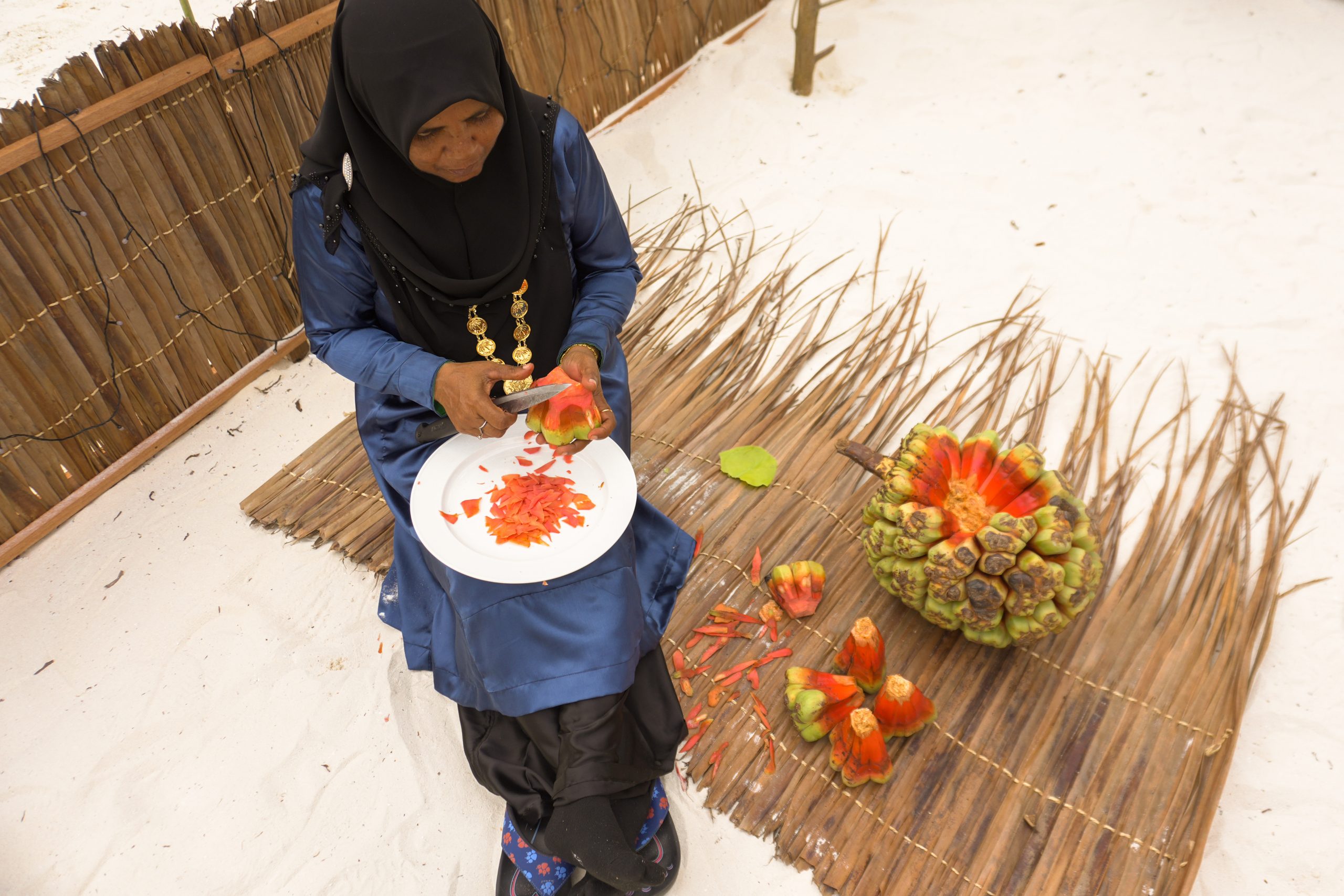
Medhufushi Island Resort recently marked Maldives National Day with an immersive celebration of Maldivian heritage, transforming the resort grounds into a living museum that reflected the country’s cultural roots. The event recreated the atmosphere of a traditional island village and offered guests the chance to experience authentic island life through interactive activities, performances, and storytelling.
The resort team constructed a replica village featuring ancestral-style houses and traditional architecture that demonstrated the resourcefulness of early island communities. Guests explored the structures and learned how Maldivians adapted to their environment over generations. The experience was enhanced by a variety of activities, including food stalls that served traditional dishes, demonstrations of local craftsmanship, and opportunities to take part in games once enjoyed by island families. Musical traditions were brought to life with the sounds of Bodu Beru drums, where visitors not only observed but also participated alongside local performers.
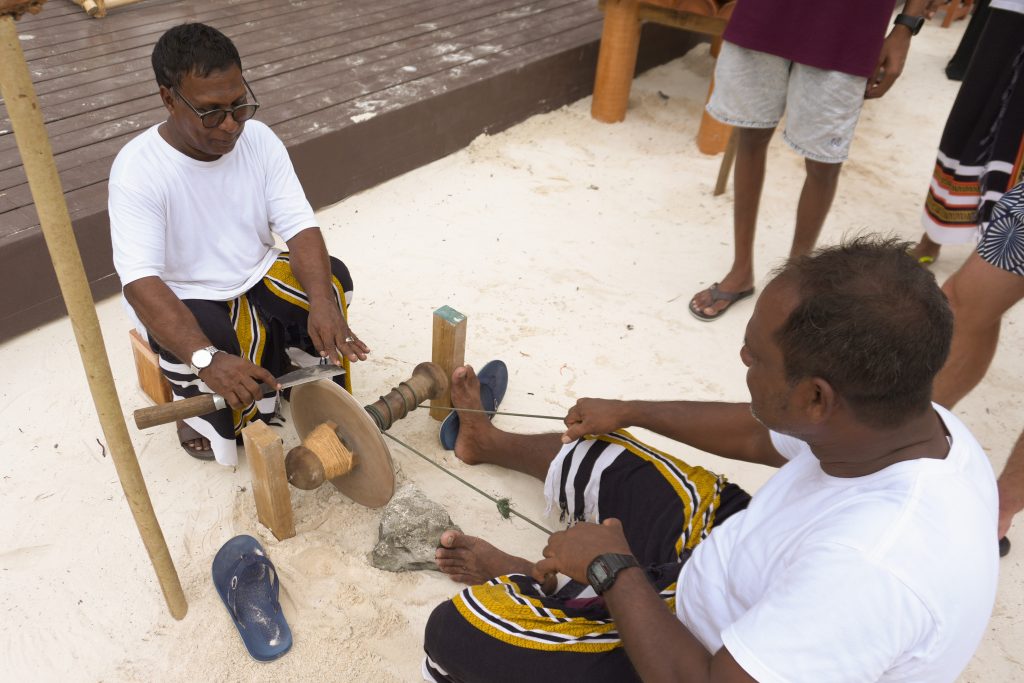
Cultural performances formed the highlight of the evening, with local women presenting traditional dances that narrated stories of island life and men delivering energetic Bodu Beru drum sessions. Guest participation was strong, with many joining in the dances and trying their hand at drumming. One visitor remarked that it felt like stepping into another time and described learning Bodu Beru from locals as an unforgettable experience.
Resort Manager Iyaz explained that the event is organised annually to preserve and share Maldivian heritage with visitors, noting his pride in the team for creating such an engaging showcase and expressing gratitude to the guests for their enthusiasm.
The celebration reflects the resort’s ongoing commitment to promoting cultural preservation through tourism, ensuring that traditional practices remain visible and valued. By offering authentic experiences, Medhufushi Island Resort connects guests with the history and identity of the Maldives while supporting sustainable tourism.
This annual showcase serves not only as entertainment but also as a bridge between past and present, reinforcing the importance of cultural continuity. Through initiatives such as these, the resort demonstrates how tourism can help protect traditions and foster community pride, enabling visitors to leave with more than memories of beaches and scenery, but with a deeper understanding of the people and heritage of the Maldives.
Island Goers
Mouni Roy’s enchanting birthday celebration in Maldives at Coco Bodu Hithi

Bollywood Actor Mouni Roy recently celebrated her 39th birthday in the most picturesque way possible, surrounded by the serene beauty of the Maldives. Accompanied by her husband, Suraj Nambiar, and close friends, Mouni’s birthday festivities were nothing short of magical. She shared glimpses of her celebration on Instagram on October 1, giving her fans a peek into her tropical retreat at the luxurious Coco Bodu Hithi resort.
A Tropical Birthday Bash
Mouni Roy has been soaking up the sun and enjoying the breathtaking views of the Maldives. Her latest Instagram updates have left fans in awe, showcasing her stunning vacation style. In one of her posts, Mouni looks absolutely ravishing in a pink bikini paired with a flowy white skirt. Posing effortlessly on a chair, she exudes confidence and charm, her sun-kissed skin and luscious, flowing hair adding to her radiant look.

Instagram Highlights
The actress shared several posts from her stay at the resort. In a video, she can be seen enjoying the resort’s over-water villa and pool, dressed in a stunning red beachwear. She captioned the post, “Loving it at @coco_resorts #cocoboduhithi #cococollection #cocomaldives #cocollectionmaldives #birthdaygateway.”
Another heartwarming photo featured Mouni with her husband, captioned, “Love & gratitude is all I feel in my heart. Ty so much for all the lovely wishes ♥️ #grateful #thankful #blessed.”
https://www.instagram.com/p/DAkjB2RNjf_/

Memorable Experiences
Mouni also shared a video reflecting on her incredible stay, captioned, “Just returned from an incredible stay at Coco Bodu Hithi Maldives with the Mr & friends, and I can’t stop reflecting on the amazing experiences we shared. Snorkeling in those crystal-clear waters was meditative; the vibrant fishy life left us in awe. 🐠 🌊 One of the highlights was the unforgettable birthday dinner they organized on the beach. The setting was simply magical, with soft sand beneath our feet and the gentle sound of waves. We kept lying down on the sand looking up at the stars. You all took such great care of us, made the evening feel special and intimate. Spending three days immersed in the ocean was rejuvenating, and every moment was filled with laughter and joy. Grateful for these memories and the beautiful bond we share. Until next time, paradise! X @coco_resorts.”
In another post, she expressed her longing to return, captioning it, “Take me back already!!!”
Mouni Roy’s birthday celebration in the Maldives was a perfect blend of relaxation, adventure, and heartfelt moments, making it a memorable occasion for her and her loved ones. Her fans are eagerly awaiting more updates and stunning visuals from her tropical getaway.
Culture
Palace for the prince: Muleeage’s century-long journey through history

It was ‘honeymoon season’ in Suez. Sultan Haji Imadudeen was reigning on a throne of love in Egypt. But back home, those were darker times, as Maldives continued to borrow from Bohra merchants of Mumbai. After all, the wedding expenses of the monarch had to be paid by the state.
Imadudeen has appointed his younger brother, Dhoshee Manippulhu of Maandhooge, as the regent to take care of the state’s affairs, but it was Prince Ibrahim Dhoshimeynakilegefaan of Athireege who ruled. Prince Ibrahim’s son, Abdul Majeed Didi of Athireege, took charge of stabilising the nation.
Backed by the British masters and business elites in Male’, Abdul Majeed Didi began hatching a secret plan. Finally, by the early hours of March 10, 1910, onlookers could understand that something was happening in Muleege. Beeru Mohamed Fulhu, who was at the Friday Mosque, saw the door being opened and Mohamed Shamsudeen being escorted out by his brother-in-law Abdul Majeed Didi and Sayyid Kilegefaanu, also known as Khatheeb Seedhi. The two men accompanied Shamshudeen to Boduganduvaru, the royal palace, and placed him on the throne as Sultan Shamsudeen Iskandhar, Al-Salitc. As Shamsudeen was the brother-in-law of both men, the aim behind the plan could mean more than just stabilising the nation; there might have been personal motives and interests.
After appointing Shamsudeen the sultan, Khatheeb Seedhi told him that no one was ever going to challenge his reign. He said that Shamshudeen was not going to leave the throne unless he wished to do so.
Khatheeb Sidi’s saying became true, as Shamsudeen remained in power for the next 31 years, six months and 28 days. That was until he left behind all the privileges of a king for the sake of his beloved son Hassan Izzuddeen, for whom he built Henveyru Ganduvaru or Muleeage from where he started his journey to become the sultan at one midnight. As the famous public speaker and poet Ibrahim Shihab later said, the sultan abdicated for the only son he ever had.
Muleeage, the presidential palace which is now 105 years old, was originally built for Shamsudeen’s son and the then Crown Prince Hassan Izzudeen. The palace was originally named as Henveyru Ganduvaru. It was a symbol of the king’s love for his son.
The origin of this address goes back to the era of the heroic Sultan Hassan Izzudeen, also known as Dhonbandaarain. This plot of land was first used to build a thatch hut when Muhammad Manik of Mulee shifted his family to the capital city. The house was later inherited by Dhonbandaarain and then by Ibrahim Noorahdeen and then by his son Shamsudeen. Hassan Izzudeen was born to Shamsudeen and Sithi Didi, daughter of Bodu Sidi of Kalhuhurage.
When Izzudeen was studying in Ceylon, Shamsudeen decided to build the house before his son returned home. Shamsudeen decided to build it as a palace for the crown prince.
Fully funded by state coffers, the project was commissioned in 1914. Ahmed Dhoshimeyna Kiligefaanu of Athireege was assigned as the project manager. Architects and builders were brought from Ceylon. Architecture and the design was that of the Victorian era with a touch of colonial architectural design. Furniture too was imported from Ceylon. Few transoms were designed by Easa Mohamed Fulhu from the island of Kela in Haa Alif Atoll.
The palace was opened on December 7, 1919, with a special Mauloodh, a cultural prayer.
Izzudeen came back from Ceylon after his education to live in the palace as “Henveyru Ganduvaru Manippulhu”. He lived with privileges that don’t match with that of any other prince. As he was a highly-skilled musician, the palace became a theatre for music. Izzudeen sang with his beautiful voice whilst also playing harmonium. Boys of his dance group, widely known as “Nashaa Party” danced to his music, dressed as ladies. Boduberu too was part of the fun at the palace. It was full on partying till midnight on most days. It is said that the novel, Dhonthuhkalaage Gellunu Furaavaru (lost teenage of Dhonthuhkala), written by Muhammad Ismail Didi of Meerubahuruge, was based on an incident that happened at the palace.
The elite of Athireege took all that as inappropriate for a crown prince. Their disapproval grew and Izzudeen was considered as someone who is ineligible for the throne. The first written constitution in the history of Maldives was passed as a result. It was written in that constitution that the sultanate will only go to a grandson of Dhonbandarain, effectively removing Izzudeen from the royal inheritance path.
But the constitution was later received by the people as a burden, as new laws were introduced to a population that was not aware of such rules. It made their life miserable.
“We can’t bear this anymore,” they said, as they gathered at the Gulhakulhey Fasgandu, an open area just next to the headquarters of the army, and tore apart the document. They even attempted to bring out some ministers to be dealt with by the mob.
The country then saw increased hostile actions against the government from Izzudeen who tried to take over.
Prime Minister Hassan Fareed issued orders to arrest Izzudeen’s allies. Izzudeen went to Bodubandeyrige, then headquarters of security forces, in person to try save his allies. Shamsudeen left the throne to follow.
The prime minister, who was paving way for the change in government, used this as an opportunity to overthrow Shamsudeen. The latter was banished to Fuvahmulah, in the far south, together with his son Izzudeen.
Izzudeen died on the island after a short ailment, whilst Shamsudeen was brought back to Male’ as his health deteriorated. He died shortly thereafter. Henveyru Ganduvaru was deserted after that.
All the palaces except that of the sultan were later downgraded and Henveyru Ganduvaru became Muleeage, taking the name of the first house built at the address.
Muleeage was used for several purposes for the next 80 years before becoming the presidential palace in 1953. From 1942 to 1947, it was used to house the ministries of home affairs and defence, and the office of the head of intelligence. It also served as the headquarters of the first newspaper in the country, Sarukaaruge Khabaru.
With the first republic that came into being in 1953, Muleeage became the presidential palace, serving as the official residence of Mohamed Ameen Didi, the first president.
As the monarchy was reinstated after overthrowing Ameen and abolishing the republic in a coup, Muleeage became the office of the prime minister. Ibrahim Famuladeyrikiligefaan and Ibrahim Nasir were prime ministers who used the office. At one point during their administrations, Muleeage also housed the ministry of defence.
Presidential palace and several ministries at some point, Muleeage has been in use ever since.
Apart from this, several high profile guests of the state stayed there during their visits. Late Queen Elizabeth and her late husband, The Duke of Edinburgh Prince Philips were amongst those.
Although Ibrahim Nasir, as the first president of the second republic, declared Muleeage as the presidential palace again in 1970, he didn’t use it as such. His successor, Maumoon Abdul Gayoom, was the first president to formally use it as his official residence. He stayed there from 1988 to 1994, before moving to Theemuge, a newly built presidential palace which later became the Supreme Court.
The first Supreme Court, which was the result of the present day constitution, was temporarily housed in Muleeage in 2008. Then came President Mohamed Nasheed who chose to make it the presidential palace yet again. It was also used as the offices of a national inquiry commission, which was setup to investigate the events surrounding Nasheed’s early departure in 2012, before becoming the presidential palace again.
In the century that has passed since Muleeage was built in its current design, it has witnessed numerous historical events in the country. It witnessed the declaration of the first republic and the reinstating of the monarchy. It hosted heads of states as well as ministers from different parts of the world. Indian Prime Minister Rajiv Gandi was one amongst them to be remembered.
Been a place for all that, the status of Muleeage is much more important in our history; it was the childhood home of Hassan Izzudeen, Dhonbandaarain, the heroic sultan who freed Maldives from the short-lived rule of the Malabari invaders, also known as “Holhin”. This was the place from where he came out for his battle with the flag of freedom flying over his head.
-

 Cooking1 week ago
Cooking1 week agoThe St. Regis Maldives Vommuli Resort welcomes Chef Renzi Gianluca for Tastemaker series collaboration
-

 Entertainment1 week ago
Entertainment1 week agoAward-winning singer Nicole Scherzinger to appear at One&Only Reethi Rah’s New Year’s Eve celebrations
-

 News1 week ago
News1 week agoSeaside Collection opens .Here, an ultra-private two-island resort in Maldives
-
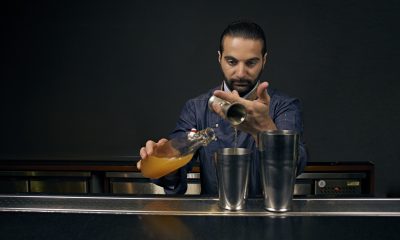
 Cooking1 week ago
Cooking1 week agoTAPASAKE Maldives marks first anniversary with Luca Cinalli guest mixology night
-
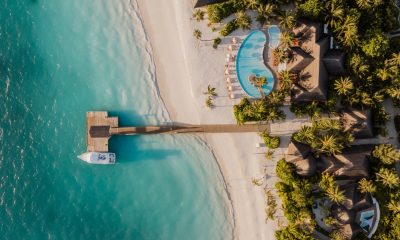
 Awards1 week ago
Awards1 week agoSun Siyam Iru Veli awarded ‘Best Resort’ title at 2025 Bund Design Hotels Awards
-
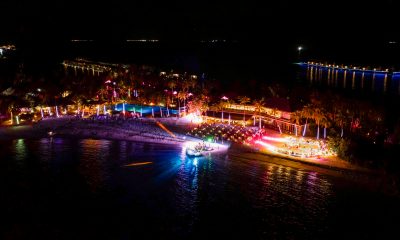
 News1 week ago
News1 week agoHard Rock Hotel Maldives unveils holiday line-up featuring Christmas and New Year gala nights
-
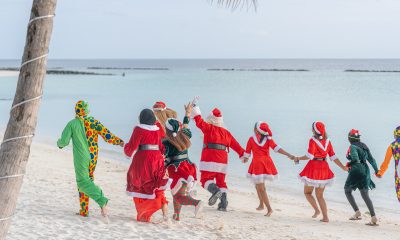
 News1 week ago
News1 week agoCelebrate retro tropicana holiday at SAii Lagoon Maldives
-

 Action1 week ago
Action1 week agoDenise Höfer returns to The Nautilus Maldives for four-day padel programme in March 2026




